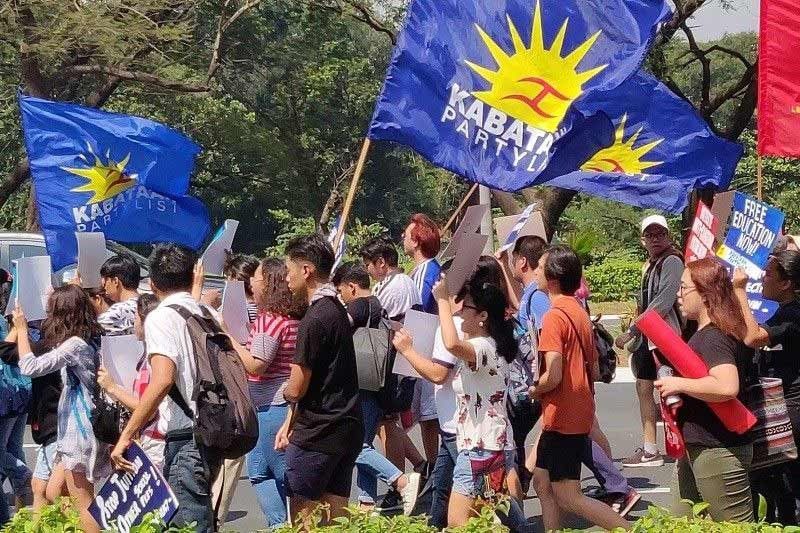
Upgrade to High-Speed Internet for only ₱1499/month!
Enjoy up to 100 Mbps fiber broadband, perfect for browsing, streaming, and gaming.
Visit Suniway.ph to learn
Students in uniform answer their learning modules during an online class under DepEd's blended learning system this year due to the COVID-19 pandemic.
The STAR / Miguel de Guzman
MANILA, Philippines — The Department of Information and Communications Technology (DICT) is set to distribute 1 million free SIM cards to teachers and students in underserved communities, as part of its initiative to bridge the digital divide.
DICT Undersecretary Paul Mercado said during a Malacañang press briefing on Wednesday, June 4, that the Bayanihan SIM Project primarily includes the construction of cell towers in Geographically Isolated and Disadvantaged Areas (GIDAs) to improve connectivity.
“Ang gagamitin po natin dito ay cell signal ‘no, kasi towers po ang gagamitin natin. So, ang purpose po noong aming project na ‘yon ay mamimigay po kami ng I think around 1 million na SIM cards doon po sa aming mga identified areas,” he said
(What we’ll be using here is cell signal, since we’ll be relying on towers. So, the purpose of our project is to distribute, I think, around 1 million SIM cards to our identified areas.)
To help pinpoint underserved areas, the DICT will work with the Department of Economy, Planning, and Development (DEPDev), formerly NEDA.
The Bayanihan SIM Project, a three-year initiative, will prioritize students, as the program is aimed at improving access to education, Mercado explained.
Free data subscription. He added that the 1 million SIM cards will provide free 25 gigabytes of data every month. This will allow students and teachers to stream videos or use conferencing platforms for online learning.
The project, Mercado said, will target areas that mobile network operators often overlook due to limited commercial returns.
“So, ang ginawa na po namin sa DICT, kami na po ang maunang magtayo doon. Kapag nagtayo kami doon, maipakita namin sa MNOs, ‘Ay, may benta pala dito,’” he said.
(So, what we did at the DICT was to take the lead in building the infrastructure ourselves. Once we build there, we can show the mobile network operators that, “Hey, there’s actually a market here.”)
Free Wi-Fi Program
The DICT is also advancing its Free Wi-Fi Program, which requires 135,000 public sites to be fully implemented. The agency aims to cover 125,000 sites by 2028.
“Ang kagandahan po nito ay inaral po namin lahat ng current technology pra mapababa ang presyo at maitaas ang dami ng ating internet [access] sa Pilipinas,” Mercado said.
(The good thing about this is that we are studying all current technologies to lower the cost and increase the availability of internet access in the Philippines.)
A major hurdle the agency currently faces is its limited budget for subscription and maintenance. This is why they are navigating the National Budget Plan, a six-phase initiative that will require close coordination with mobile network operators to expand Free Wi-Fi coverage.
“Ito po ‘yung aming sustainability plan para dito sa Free Wi-Fi para hindi tayo hingi nang hingi ng budget for the Free Wi-Fi,” Mercado said.
(This is our sustainability plan for the Free Wi-Fi program so that we won’t have to keep requesting a budget for it.)
The Bayanihan SIM project is set to launch sometime between late June and September this year.
RELATED: What’s next for the Free Wi-Fi program? DICT explores cost-effective revamp

 1 day ago
8
1 day ago
8



